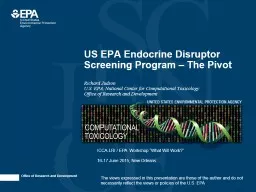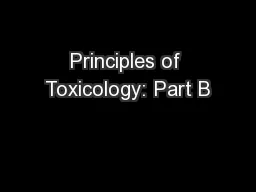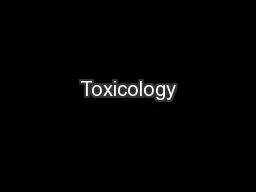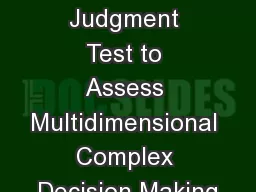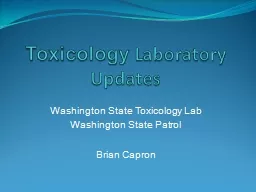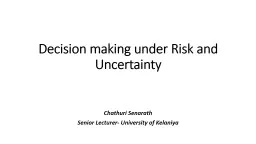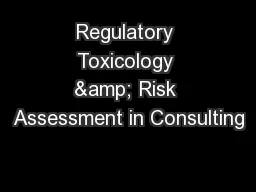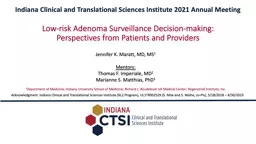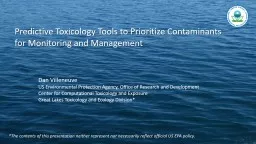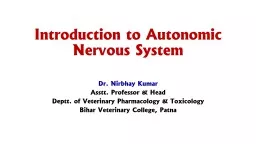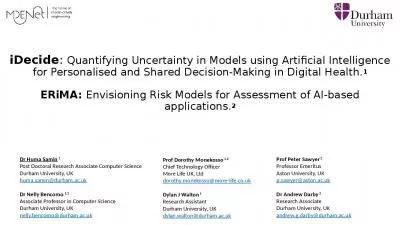PPT-Using Computational Toxicology to Enable Risk-Based Chemical Safety Decision Making
Author : missroach | Published Date : 2020-06-15
Richard Judson US EPA National Center for Computational Toxicology Office of Research and Development The views expressed in this presentation are those of the author
Presentation Embed Code
Download Presentation
Download Presentation The PPT/PDF document "Using Computational Toxicology to Enable..." is the property of its rightful owner. Permission is granted to download and print the materials on this website for personal, non-commercial use only, and to display it on your personal computer provided you do not modify the materials and that you retain all copyright notices contained in the materials. By downloading content from our website, you accept the terms of this agreement.
Using Computational Toxicology to Enable Risk-Based Chemical Safety Decision Making: Transcript
Download Rules Of Document
"Using Computational Toxicology to Enable Risk-Based Chemical Safety Decision Making"The content belongs to its owner. You may download and print it for personal use, without modification, and keep all copyright notices. By downloading, you agree to these terms.
Related Documents

